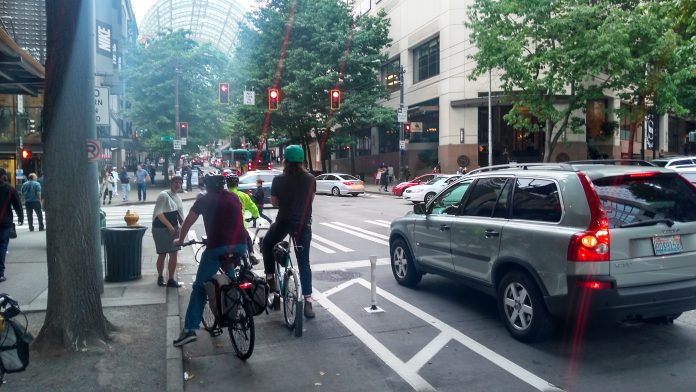When Mayor Ed Murray’s office announced funds to expand Pronto cycle share would instead be invested in safe streets infrastructure back in January, one of the items earmarked was “accelerating design and outreach for the east/west connections in the Center City bicycle network.” Because east-west bike connections have always been the unicorn in Seattle’s bike network, many advocates were skeptical that a little extra money would be the catalyst for finally allocating the street space. But here we are almost to the end of the third quarter of 2017 and it has happened.
This past weekend, Seattle Department of Transportation (SDOT) installed Pike and Pine Streets’ first protected bike lanes Downtown, and the heart of Seattle’s center city will be forever the better for it–but only if we can build on our success. Crews on Saturday and Sunday laid down paint, posts, and green crossbikes. They also installed new traffic signals with separate phases for bikes and turning vehicles.
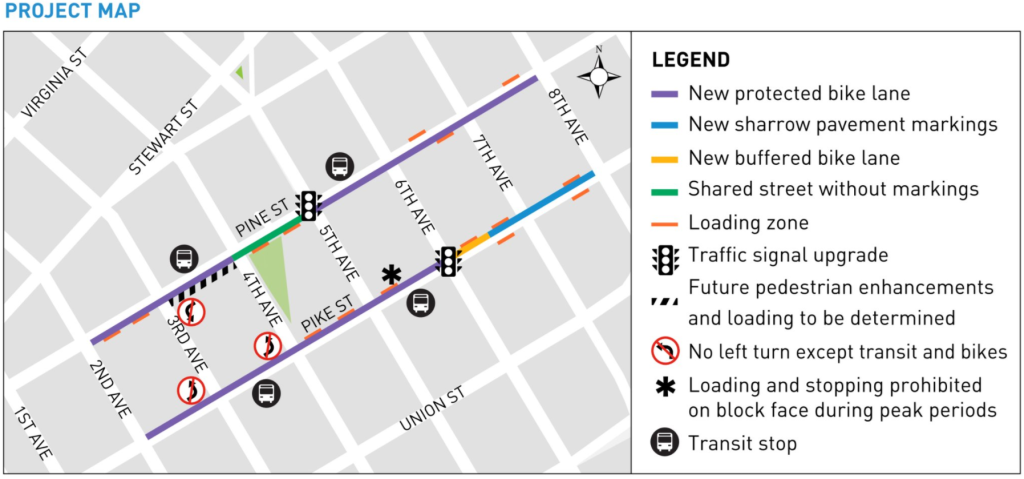
As we reported last month, however, we are still not at the point where we have a full connection between Capitol Hill and Downtown. The designs as implemented have some pluses and minuses.
The Good
The biggest impact from this change to Pike and Pine Streets is how different the streets feel now that a lane of traffic has been taken out. At intersections, turns are either restricted entirely or there is a signal holding turning vehicles while pedestrians cross so people on bikes and people on foot feel prioritized. This has obvious safety benefits by reducing conflicts. That said, all changes like this need to be enforced to be effective. Seattle police will need to do their part, and I have seen them out this week doing so.
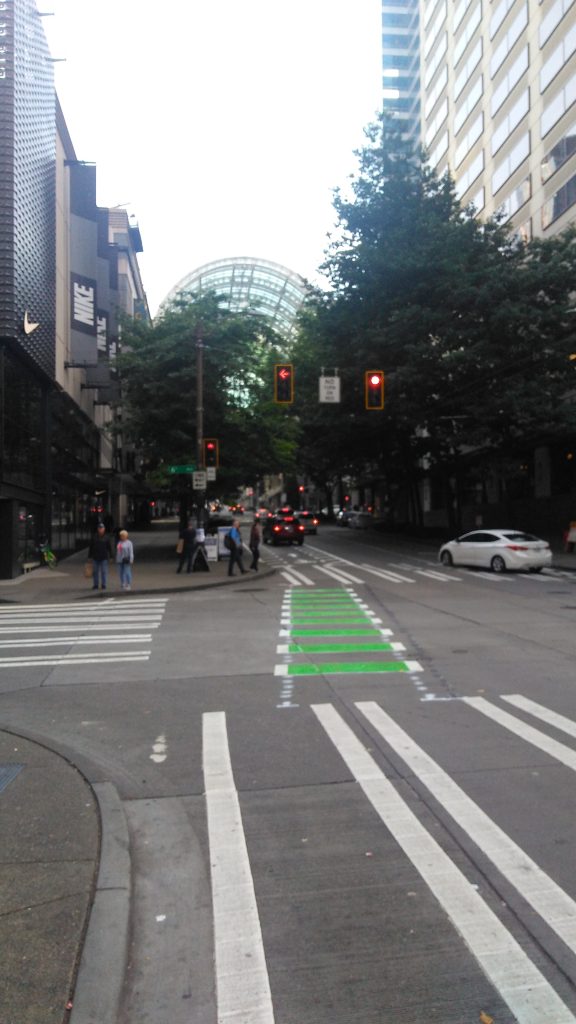
The biggest impacts are at the intersections where there were the most conflicts: Pike and Fourth Avenue, where drivers are not allowed to turn left onto Fourth Avenue at all, and Pine and Fifth Avenue, where there is now a dedicated phase holding left turns.
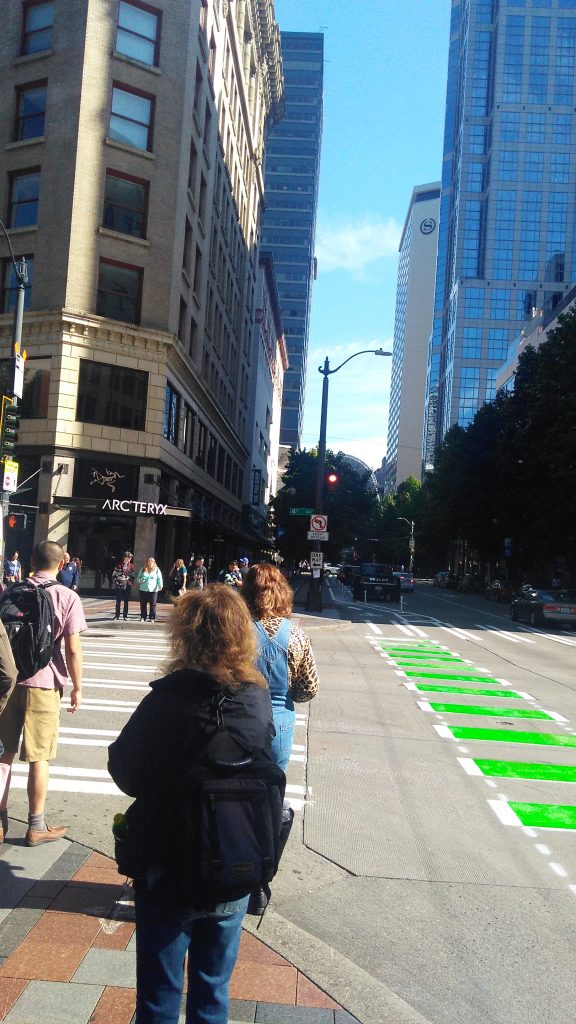
On Pine between Fourth and Third Avenues, the back-angle parking that had been in place since a bus island was removed several years ago is now gone. What exactly will activate the space between the curb and the bike lane is not known, but it sounds like food trucks are a top contender. Here is another space where SDOT is pivoting away from the street’s car-centric nature. (Side note: hoping that we can find a non-diesel use for this space, perhaps with electric outlets for food trucks.)
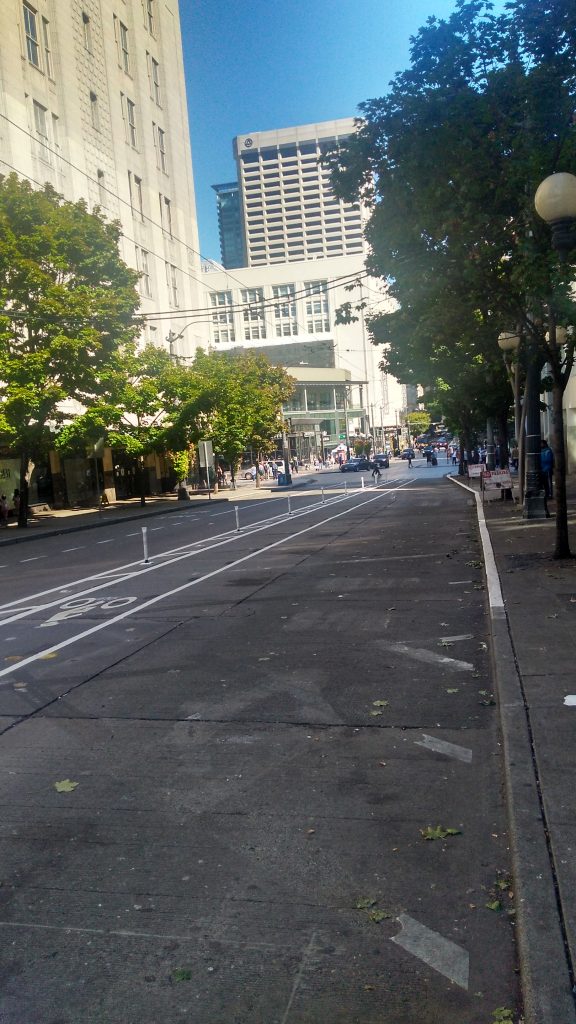
On the blocks where these bike lanes have been installed, the overall feeling of being on the street is just plain better.
The Bad
When it was announced last August, I lamented the fact that the lane on Pike Street ends at Sixth Avenue, just short of the crucial connection to Eighth Avenue and Capitol Hill. Now that it is on the ground, this gap seems even sillier than it did, because the street space has already been allocated between Second and Sixth Avenues–going all the way will pay so much higher dividends. The only issue is getting there. When the Seventh Avenue bike lane comes in next year, the need to accommodate drivers turning onto that street will be removed due to its conversion to one-way operations. That leaves only one more block to Eighth Avenue, which will also get its contra-flow driving lane removed.
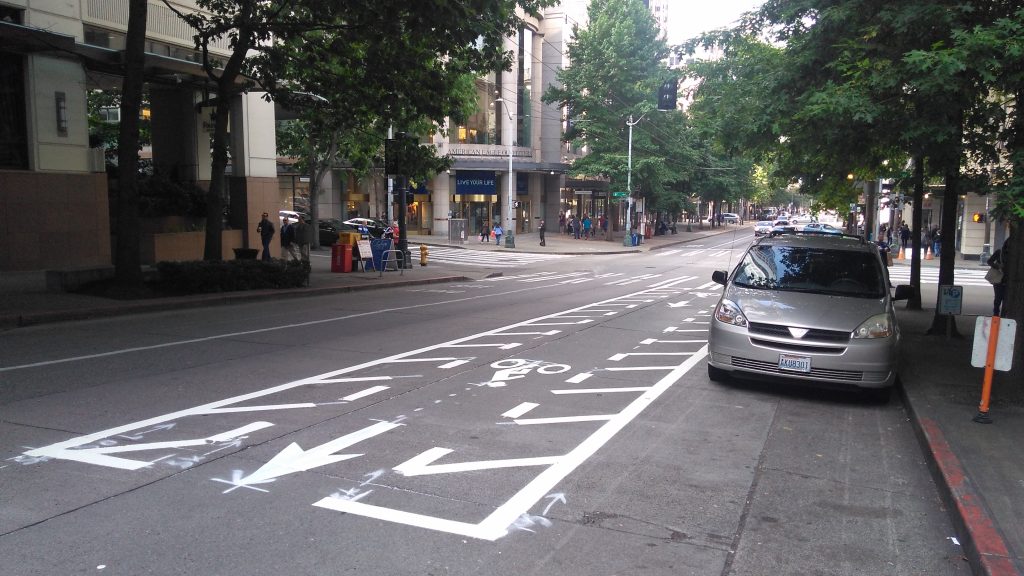
Pine Street is another matter. For riders coming from Capitol Hill, currently you have to cross the entirety of Pine to get from the painted bike lane on the right side coming down the Hill to the start of the protected lane on the left. This happens directly in front of the Hyatt hotel where there are likely to be a lot of vehicles entering and exiting the driveway. In addition, when you get to Fifth Avenue, cyclists are forced to merge into the shared space of Westlake Plaza. Any changes to the decorative tiles were essentially off the table in order to separate the modes, so this is what we are left with. The only silver lining with this merge is that the leftmost travel lane is now a turn-only lane, so cyclists should have a lane to themselves with traffic going straight on the right side lane.
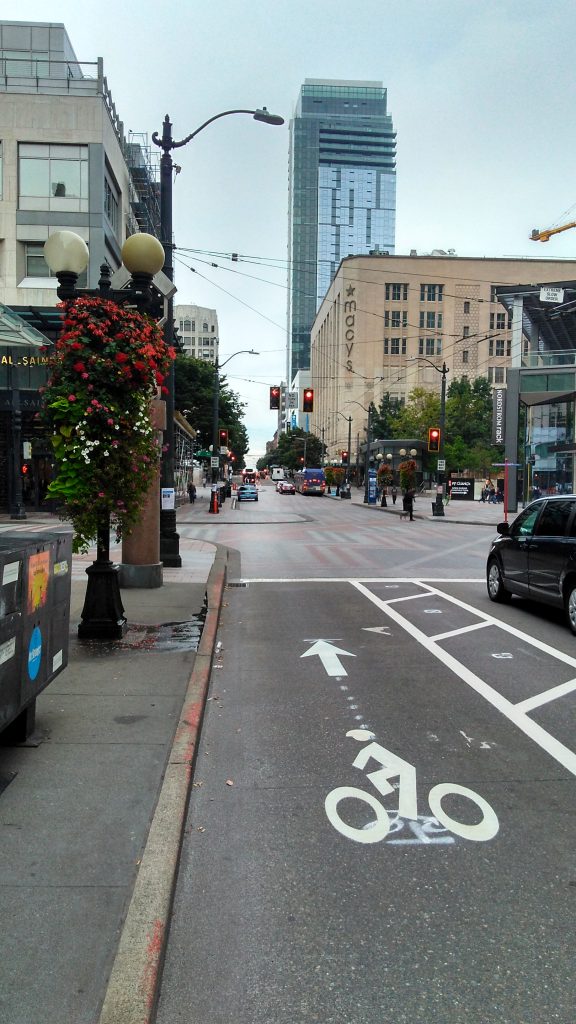
This isn’t a design that accounts for people making mistakes. Everything has to line up just right for cyclists to feel comfortable merging into Westlake plaza.
The bus lane, which I called a placebo when it was rolled out, seems even more so now, with the key block between Fifth and Sixth Avenues now being the main queue for drivers going straight. The bus stop has been moved back a few hundred feet, which will help with speeding up loading and unloading, but a serious transit lane this is not. And that’s too bad.
Westlake Plaza is crying out for a return to its car-free past.
People-Centering our Downtown Core
The problems for the protected bike lanes can be resolved relatively easily. The important thing that this weekend’s installation shows is that by reallocating a small amount of street space on our central streets, the entire environment can shift away from feeling car-dominated.
Dongho Chang, Seattle’s head traffic engineer, posted the following chart to his Twitter account last week, showing data from observations at Fourth Avenue and Pine Street back in June.
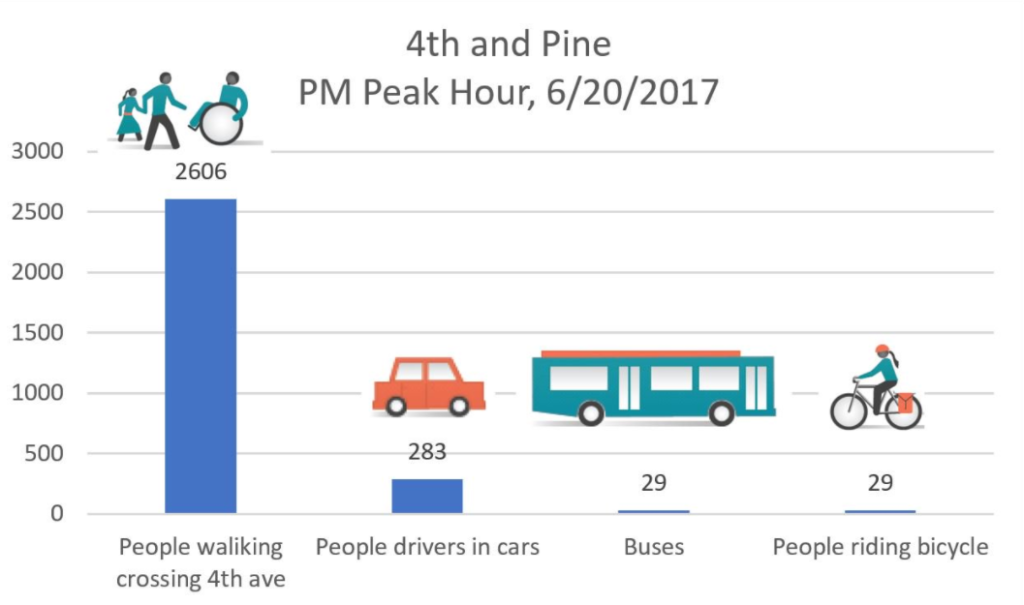
The vast majority of users at the intersection were moving through on foot, and using the margins of our streets to do it. While the changes made will undoubtedly have a big impact on cyclists downtown, it’s pretty clear the real beneficiaries of the changes are people walking. Now we just need to carry that thinking across the rest of our downtown. Whatever “bikelash” results from this, we have taken a huge leap forward.
Ryan Packer has been writing for The Urbanist since 2015, and currently reports full-time as Contributing Editor. Their beats are transportation, land use, public space, traffic safety, and obscure community meetings. Packer has also reported for other regional outlets including BikePortland, Seattle Met, and PubliCola. They live in the Capitol Hill neighborhood of Seattle.

